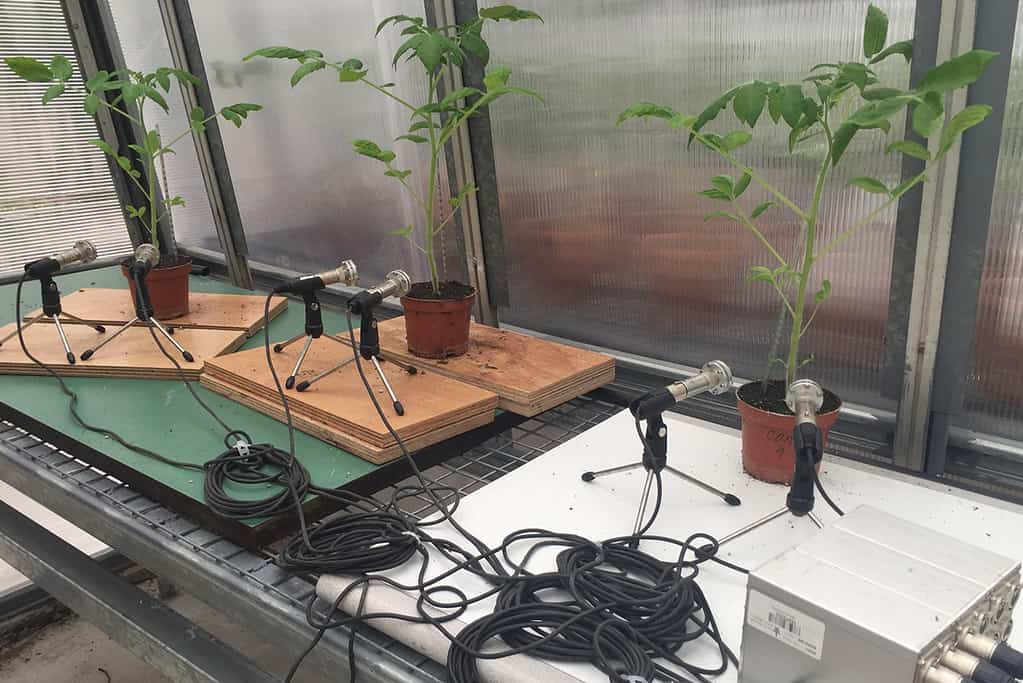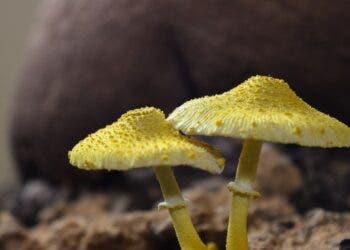A group of Israeli scientists has recorded sounds produced by tobacco and tomato plants. The results suggest that perhaps plants produce these sounds to interact with insects, animals, and other plants. During their study, they also found that the more a plant is stressed, the louder sounds it makes.
Although some studies in the past have also reported ultrasonic vibration emitted by plants, this is probably the first time scientists have been able to capture airborne plant sounds.

Now you might be wondering that if plants release sound, why don’t you hear it? Imagine you are sitting inside your office space, enjoying a nice cup of tea, and suddenly you hear two trees outside your window fighting over who produces more oxygen. Hearing plants and trees could have been so much fun, but in reality, it is not possible because plants release high-frequency sound waves that cannot be heard by human ears.
However, “It’s possible that other organisms could have evolved to hear and respond to these sounds. For example, a moth that intends to lay eggs on a plant or an animal that intends to eat a plant could use the sounds to help guide their decision,” said Lilach Hidany, senior study author and a faculty of life sciences at Israel’s Tel Aviv University (TAU).
How did scientists record plant sounds?
According to the study authors, many plants including cacti, wheat, corn, and grapes are known to emit sounds under stress but they chose to study tomato and tobacco because both these plants can be grown easily and within a short period. They first employed microphones to record the sound of healthy tomato and tobacco plants in a soundproof acoustic chamber and then in a noisy greenhouse setting.
After they were done recording the sounds of healthy plants, they stopped watering the same plants and stressed those further by chopping off their stems. This process continued for some days and then they again recorded the plant sounds. The researchers then ran the recordings through a machine-learning program. The algorithms of this program were trained to spot differences between the sound of healthy plants, thirsty plants, and chopped plants. Moreover, it could also tell whether a sound came from tomato or tobacco plants.
The data from the machine learning-based program revealed that plants produced bubble wrap pop or click-like sounds. They also noticed that stressed plants produced more sound (up to 30-50 clicks or pops per hour) and healthy plants were quiet most of the time. In fact, tomatoes were almost silent when there was no stress factor in action. The maximum sound was produced when plants were not watered and remained thirsty for five days.
Plants are talking, but who’s listening?
During their previous study, the researchers noticed that plants respond to sounds made by other organisms. For instance, according to their past findings, plants increased the sugar content in their nectar at times they heard the sounds made by pollinating insects. In the current study, they mention that plants emit sounds possibly to communicate with insects and animals who are able to hear them. However, there is no solid evidence to validate this assumption.

Another possibility is that maybe plants interact with other plants using the sounds they produce. They produce more sound under stress maybe because by doing so, they are making other plants aware of the stressful conditions. Further research is required to explore these possibilities but apart from these, plant sounds hold great importance for various other reasons as well.
For example, a technique that could detect and differentiate different plant sounds (like the machine learning program used by the researchers) could allow farmers to monitor the health of their crops much better in the future.
Co-senior study author and a professor of zoology at TAU, Yossi Yovel said, “We know that there’s a lot of ultrasound out there—every time you use a microphone, you find that a lot of stuff produces sounds that we humans cannot hear—but the fact that plants are making these sounds opens a whole new avenue of opportunities for communication, eavesdropping, and exploitation of these sounds.”
The researchers at TAU are now studying how plant sounds actually affect insects and other organisms. Hopefully, their research will bring us closer to understanding the plant life around us.
The study is published in the journal Cell.






